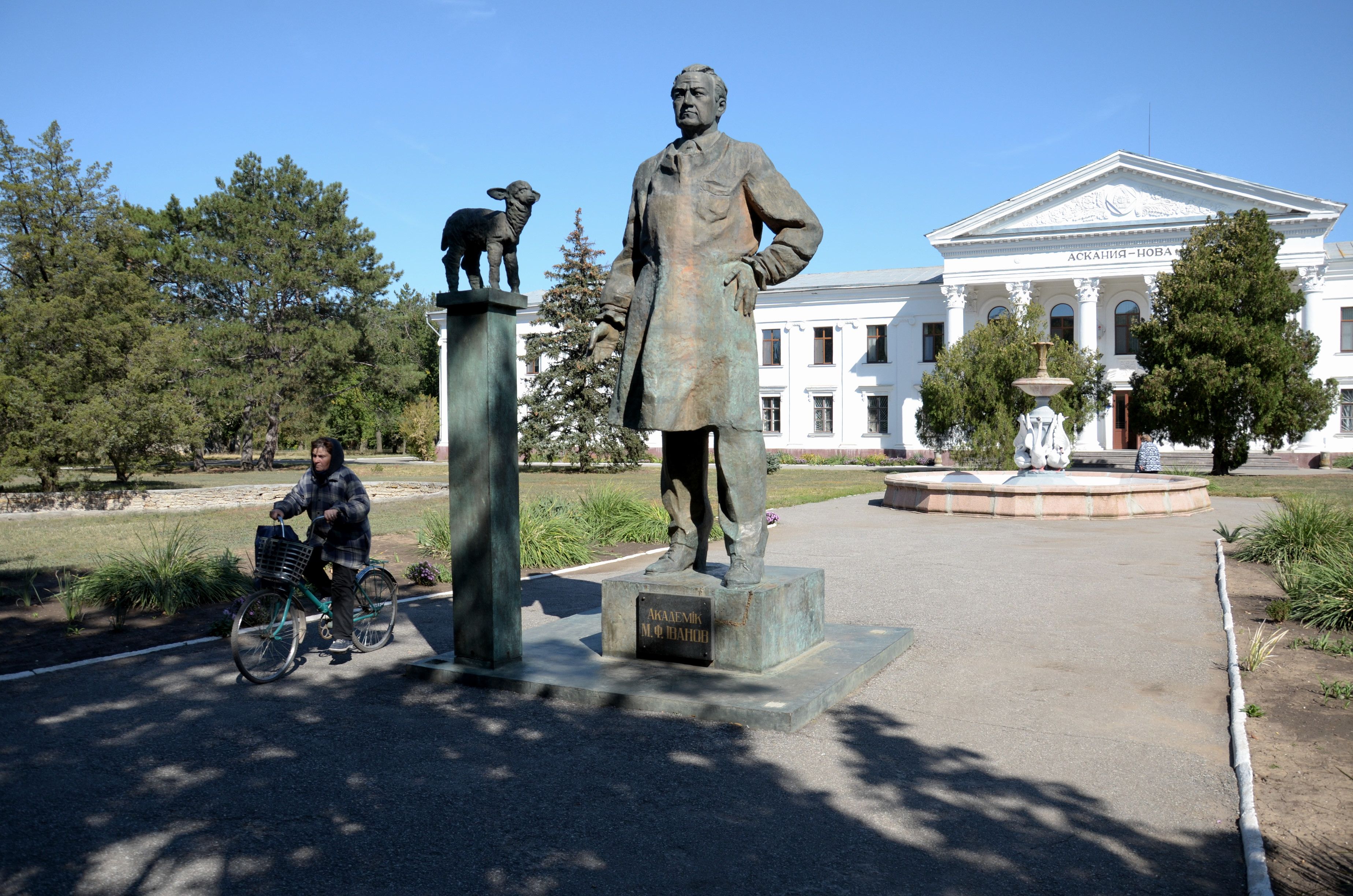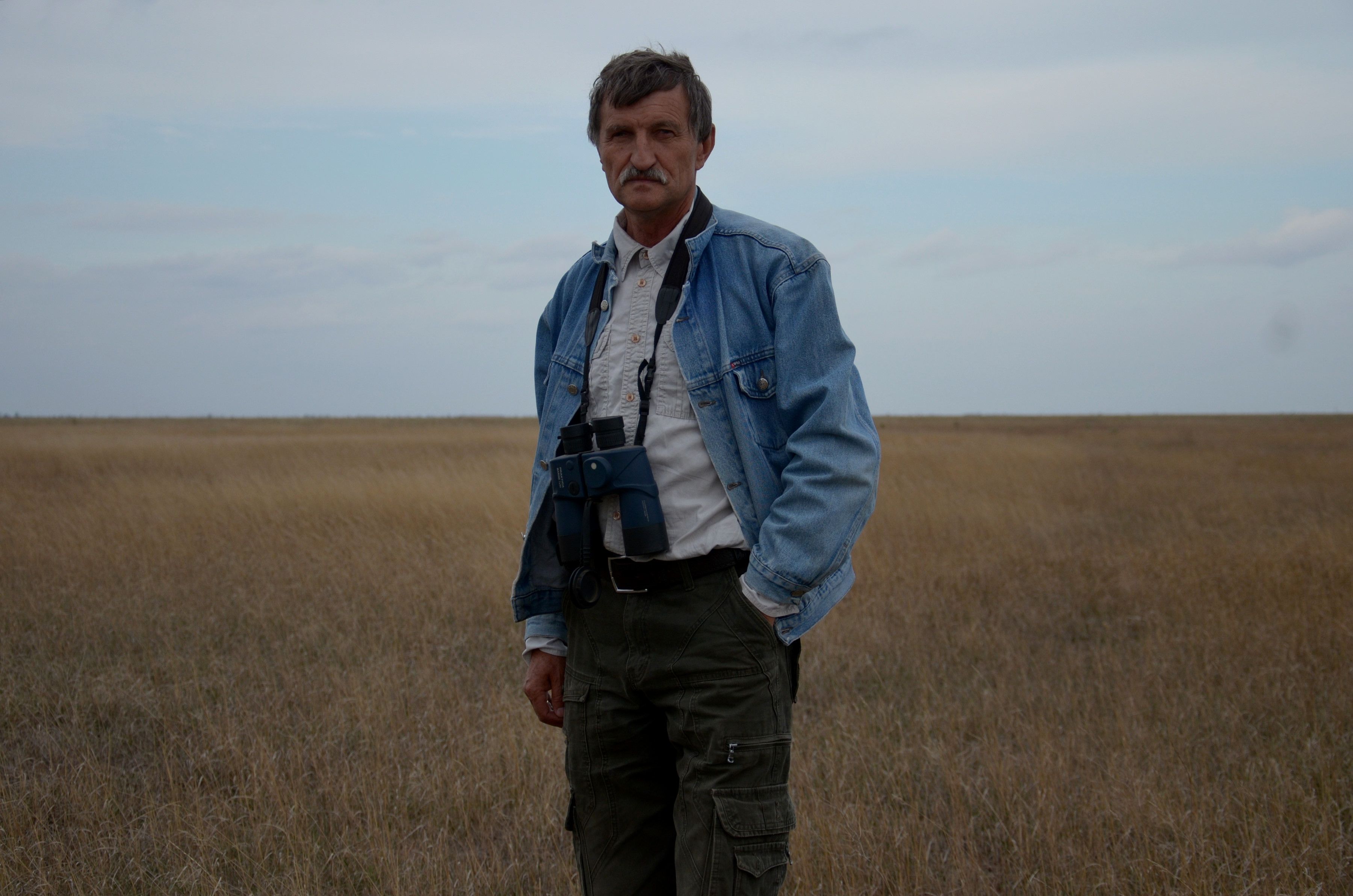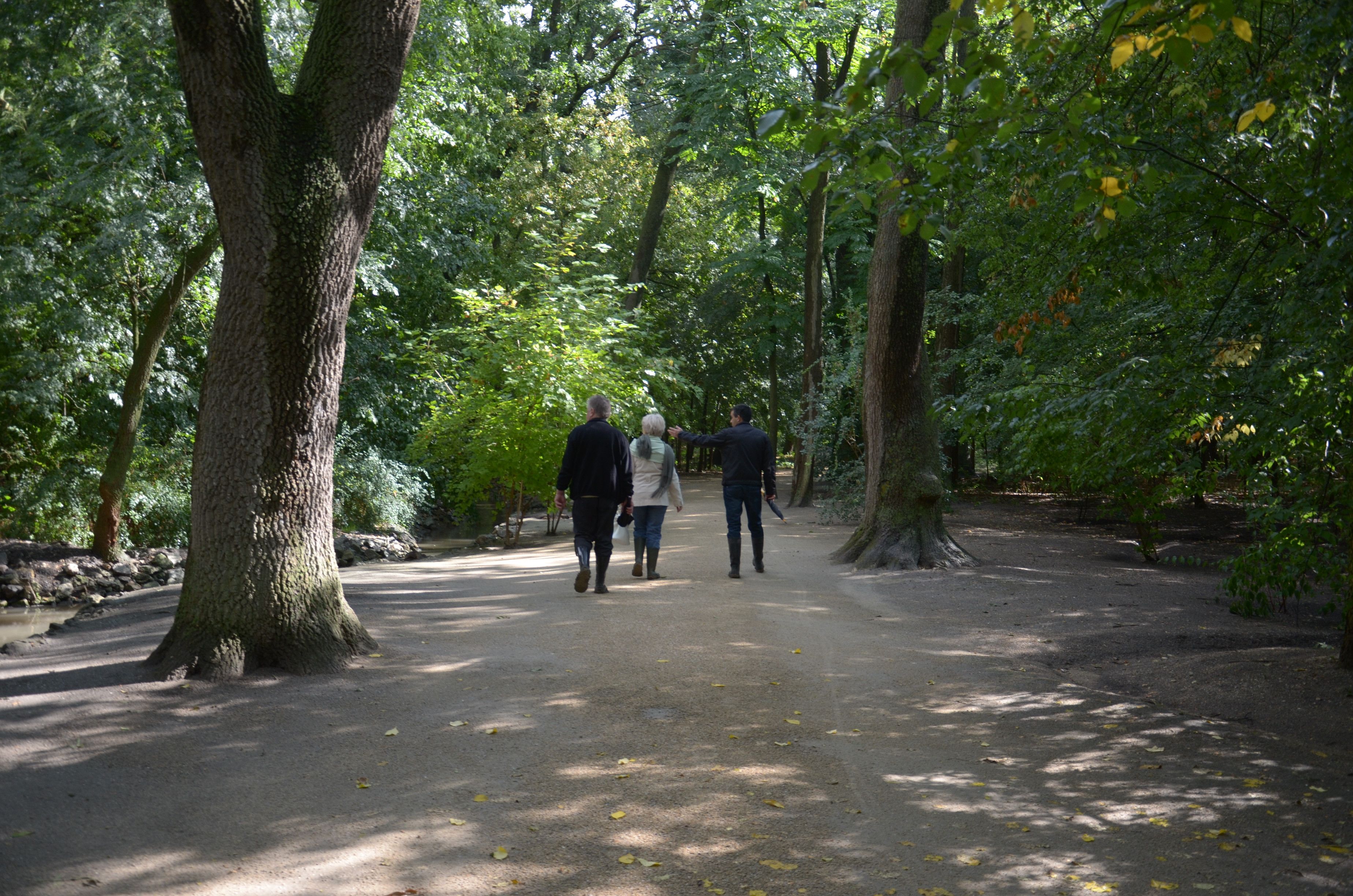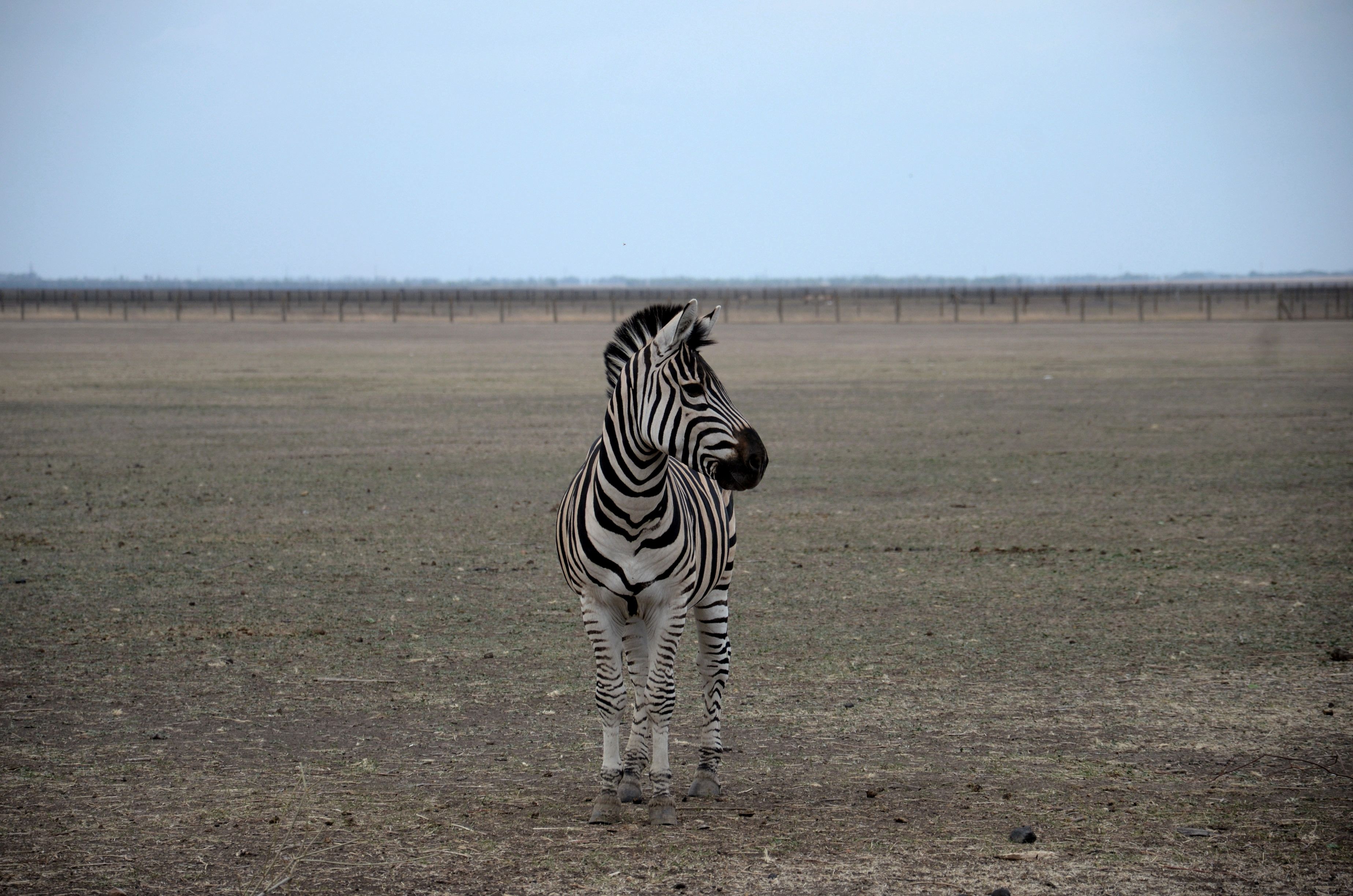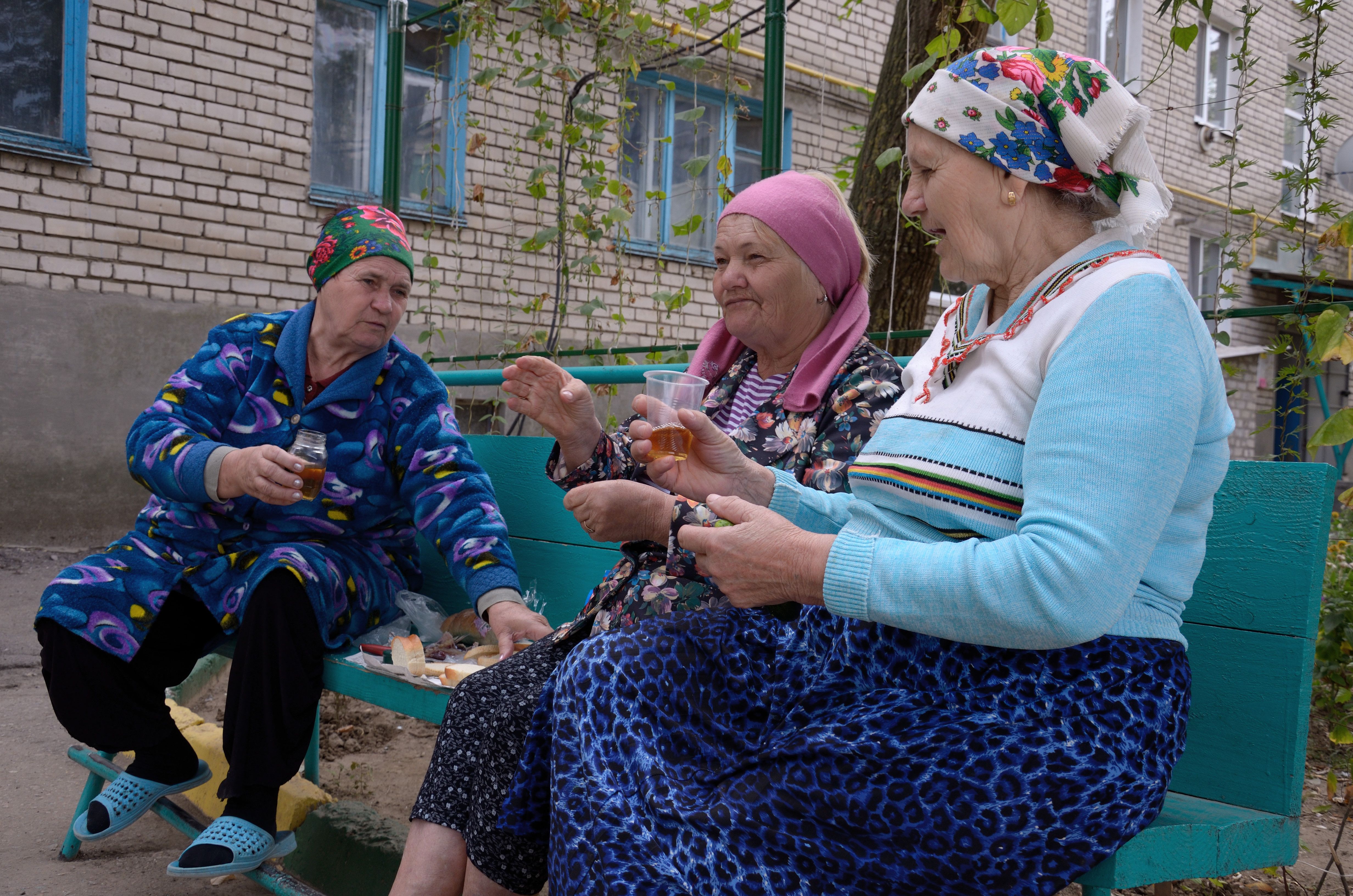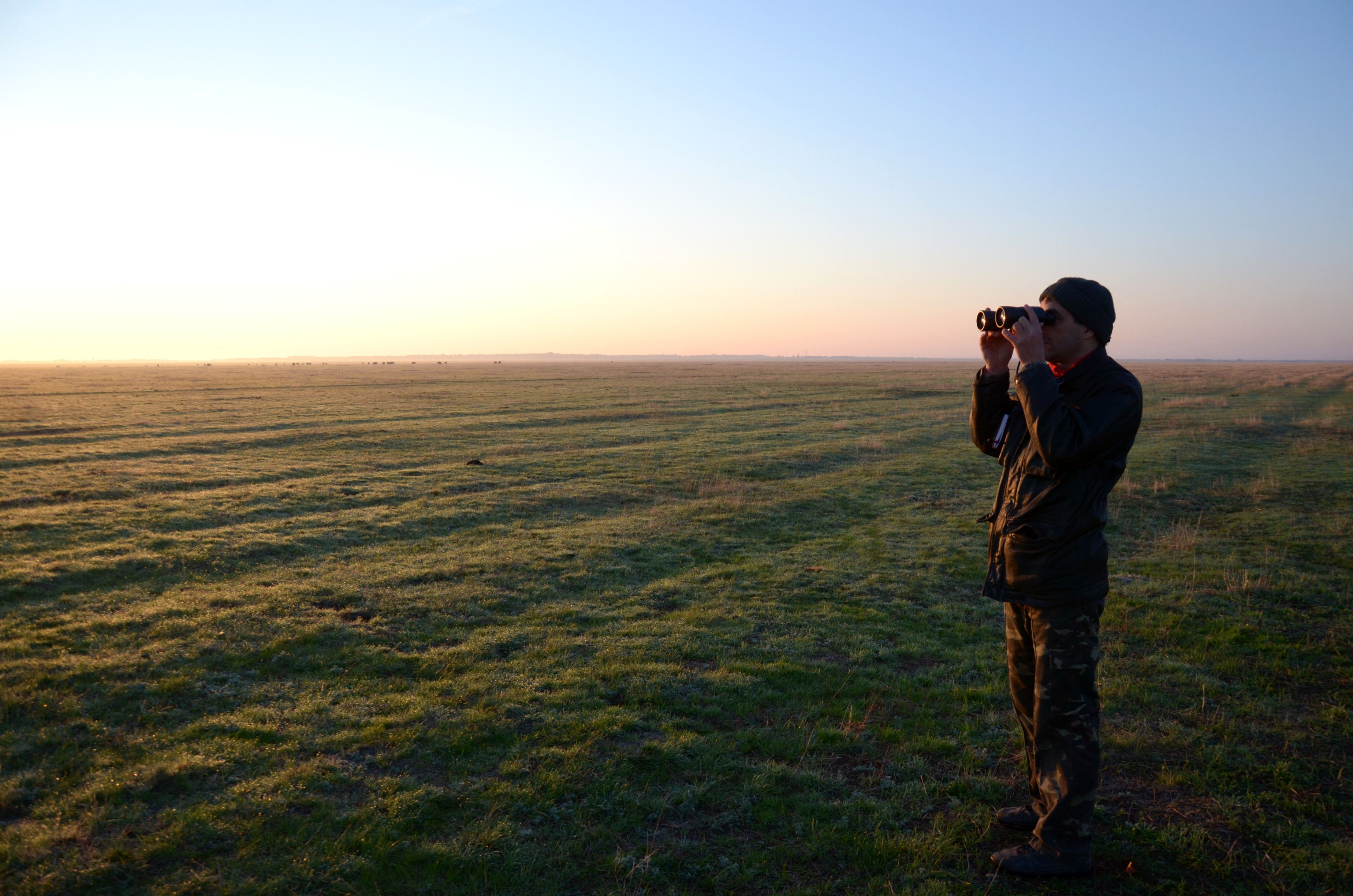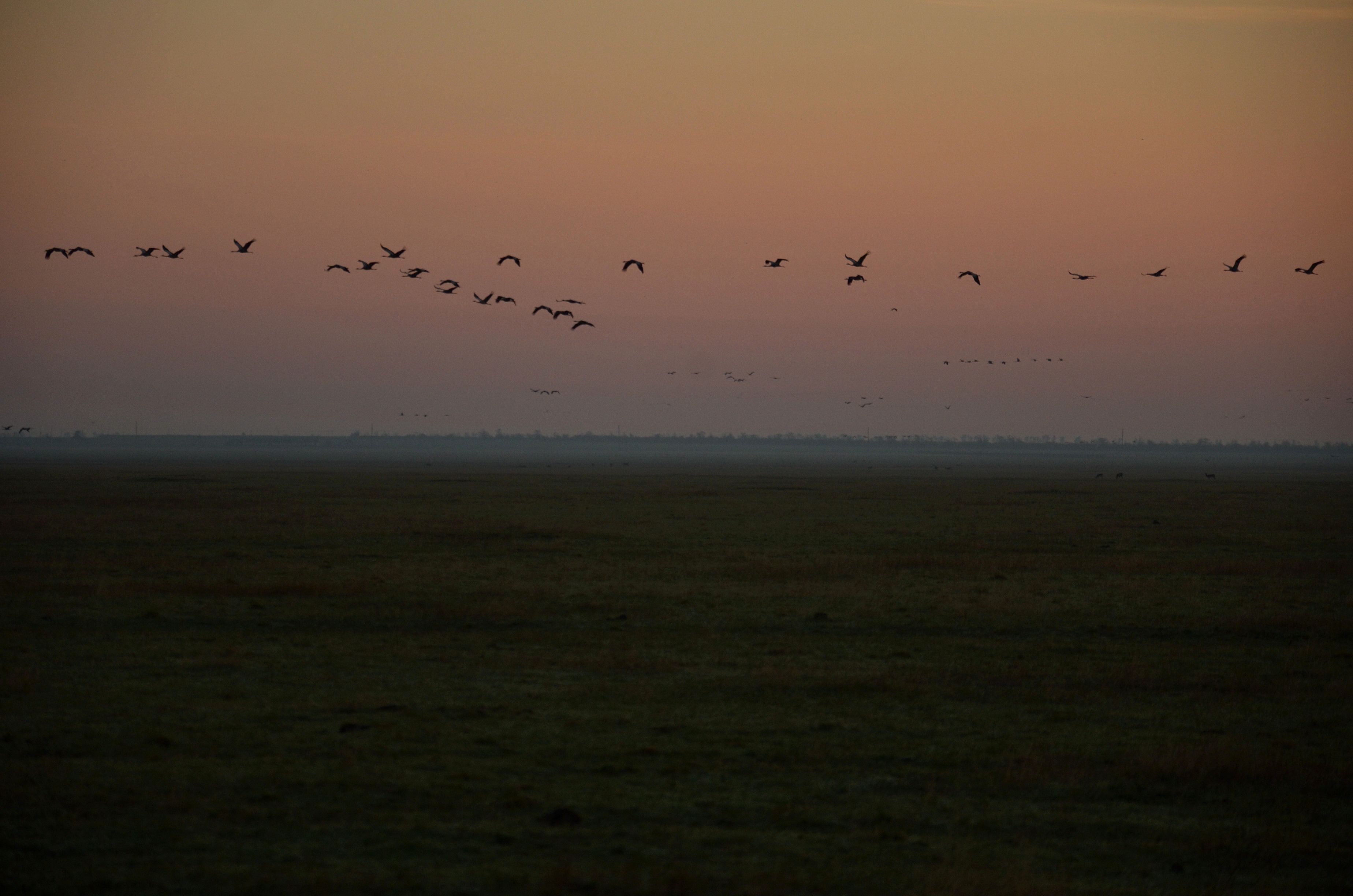The steppe is perhaps the most important geographic concept in Ukraine, the defining historical, economic, and symbolic marker. For much of the past two thousand years, it was Europe’s most contested frontier, a region of bloody turmoil and constantly shifting borders. Once known in Russian as dikoe pole, “the wild field,” the steppe was populated by a mixture of nomadic and semi-nomadic groups, and it took the Russian Empire until the end of the eighteenth century to bring most of them under imperial control. But that did not necessarily translate into peace. Ukraine, “the borderland,” has been the site of some of the worst atrocities—pogroms, famines, and wars—in the 20th century. And today, sadly, it has become a battlefield yet again. Like the American prairie, the steppe is a place where myth and reality blend together, the meeting point of absolute beauty and absolute violence.
The most famous natural feature of the steppe is, of course, the endless expanse of billowing grass. “Nature has nothing fairer that these steppes, with their surface like a green-gold ocean, strewn with a million flowers,” wrote Nikolai Gogol in Taras Bulba, his novel about the brave frontiersmen of the steppe, the Cossacks. The fertile black soil, chernozem, sustained the rich grass, feeding the pastoral communities, while later it supported one of the most productive grain industries in the world.
But the gradual colonization and settlement of the steppe, the population explosion (from 380,000 in the early eighteenth century to 25 million in the early twentieth) and the advent of ever more sophisticated agricultural machinery meant that much of the original wilderness quickly began to disappear.
In the late 19th century, Friedrich Falz-Fein, a progressive landowner and heir of German colonizers, decided to fence off part of his estate of Askania-Nova in southern Ukraine, close to the shores of the Black Sea, to protect the original flora from the plow and the sheep. But his ambition went further: He wanted to introduce wild animal species, local but also foreign, that thrive in steppe-like environments. In a sense, Falz-Fein was an early, if idiosyncratic, proponent of what conservation biologists may today call “rewinding.”
Soon enough, Askania-Nova housed herds of critically endangered Saiga antelopes (once abundant on the Eurasian steppe), buffaloes, zebras, camels, ostriches, wildebeests, and even kangaroos, many living in semi-wild conditions—a kind of Ukrainian Serengeti. In 1899, Falz-Fein sponsored an expedition to Mongolia, which procured Przewalski’s horses, the last truly wild horse—an effort that decades later would prove instrumental for saving that species from extinction. He also founded a zoo and an enormous dendrological park, irrigated through deep artesian springs in the middle of the arid landscape, which earned Askania-Nova the nickname “oasis on the steppes.” When Czar Nicholas II visited in 1914, he was so impressed he made Falz-Fein nobility.
During the Russian Civil War, the reserve was devastated and about three-fourths of the animals perished. When hostilities ended, Askania-Nova was nationalized and gradually rebuilt and expanded. But the Soviet focus on agricultural production created much tension between the utilitarian, practically minded agronomists, who simply wanted to raise livestock and grow grains (or conduct junk science with animal hybridization) and the more ecologically-minded staff, who wished to preserve the virgin steppe for scientific observation and for its own sake. As the environmental historian Douglas Weiner writes in his book Models of Nature, “[In] Askania-Nova… all of the salient problems and most crucial developments of Soviet conservation and ecology were interwoven.”
Only in the 1980s, as the Soviet regime was falling apart, did real work to restore Askania-Nova’s true conservation mission commence, as it became part of UNESCO’s network of biosphere reserves. In 2008, its popularity growing and boasting well over 100,000 visitors each year, Askania-Nova was voted one of the Seven Natural Wonders of Ukraine, and went on to represent the country in an international initiative called New7Wonders of Nature. Even though it did not win, the recognition was sufficient honor.
Today Askania-Nova is still functioning and one could visit the virgin steppe, look at the Saiga antelopes and the Przewalski’s horses, see the migrating cranes, walk around the dendrological park or the zoo. The current conflict in Ukraine, however, has scared most visitors away. Air defense radars and batteries surround the town, ready to respond to a Russian invasion. Military checkpoints have been set up on the main roads in the region, where gruff camouflaged men dig trenches and wield Kalashnikovs.
In times of war, focused on the immediate task of survival, people tend to forget about wild animals and the natural environment. Our histories barely mention the devastation wrought by human wars on non-human species. In eastern Ukraine, already hundreds of thousands of acres of steppes—and the animals living there—have been obliterated. Yet, the administration and staff at Askania-Nova persevere in their invisible task, hoping to save Ukraine’s natural heritage for the next generation.
I visited the Askania-Nova nature reserve in late September/early October of 2014, when the steppe’s iconic fescue and feather grasses, dotted by red tulips and purple irises, had long gone to seed under the harsh summer sun. But the immensity of the landscape, stretching out in all directions, was still dizzying. “You go on and on and there is no way to tell where it begins and where it ends,” wrote Anton Chekhov at the close of the 19th century in one of my favorite stories, “The Steppe.” I can attest to that: The steppe is endless.
